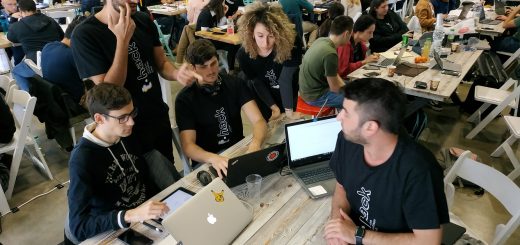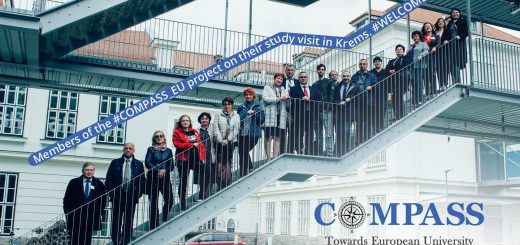Student-centered learning: Paths to achieve it
Student-centered learning and teaching (SCLT) should be at the heart of higher education institutions or at least most institutions nowadays claim it. Still, an EU report from 2020 states that “for the most part, we are still living in a teacher-centred paradigm.” (Klemenčič et al, 2020). At the eucen Autumn Seminar 2022 I presented ways to support the active implementation of student-centered learning.
Just another buzzword?
Nowadays, higher education institutions claim that student-centered learning is important for them. Various EU recommendations and EU projects promoted the shift from a teacher-centered to a learner-centered learning paradigm in education. Still, student-centered learning and teaching (SCLT) is applied in a rather fragmented way. Is it another buzzword without any meaning?
Beyond the what and how of student-centered learning
As an instructional designer, I know about the “how” and the “what” of student-centered learning and teaching. I support the implementation of this kind of learning design in higher education institutions (e.g. in the COMPASS project, as “flying expert” for German Higher Education or for “my” university, Uni Krems) as well as in corporate learning contexts (e.g. at Wiener Linien). Providing training as well as coaching on “what” and “how” is important, but I figured that it is just not enough. There are some other forces that are keeping us from the successful roll-out of student-centered learning designs.
Golden Circle of what, how, and why
Simon Sinek gives some insights with his “Golden Circle” (2009):
The Golden Circle adopted in the educational sphere
Hattie (2018) adopted and combined the “Golden Circle” with the “Good Work” principles of Gardener (2007). Here is a graphic representation (a selected slide from my Autumn Seminar slide deck):
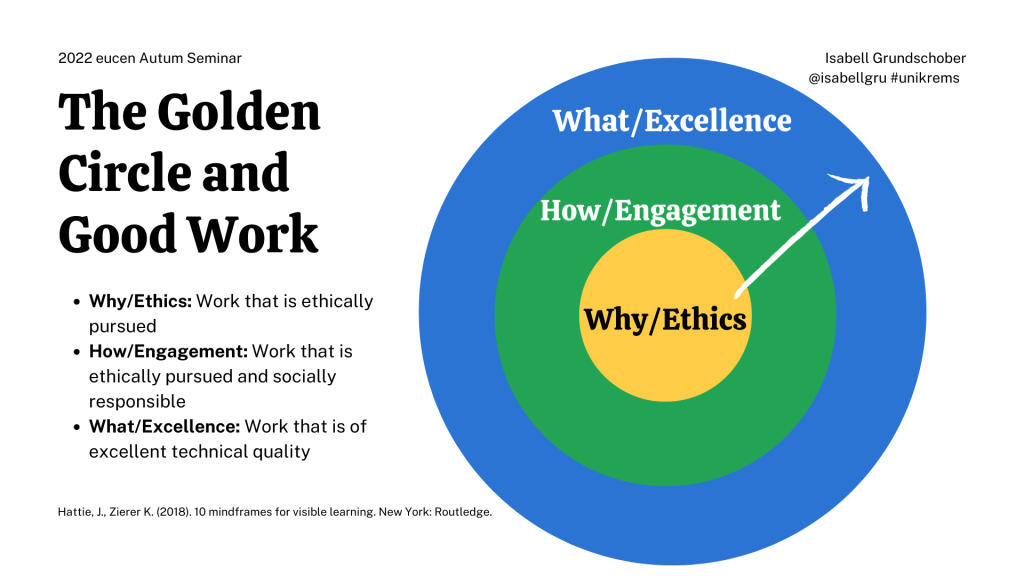
The idea is: We need to move from the Why to the How and the What. Otherwise, we will have a hard time gaining acceptance. If we don’t start with the “why” the terminology “student-centered learning” will stay a rather empty buzzword. No matter how are hard you try to make the stakeholders in the educational system apply student-centered learning, it won’t be achieved without a common acknowledgment of the “why.” Stakeholders will try to meet the defined SCTL objectives and use SCTL methods but they will still manage to stick with traditional learning methods.
How to promote the “WHY” of student-centered learning?
Of course, in my workshop, we also discussed the “what” and the “how” of student-centered learning to have a common understanding. What I find really interesting is the “why” of student-centered learning. How we could achieve that all stakeholders in the learning process (core: institutions, teachers, learners) value and accept the “why”?
The “why” has much to do with the EU competence strategy, which has been influencing how education is provided in the EU. Here is a brief overview of the history of the EU’s competence strategy:
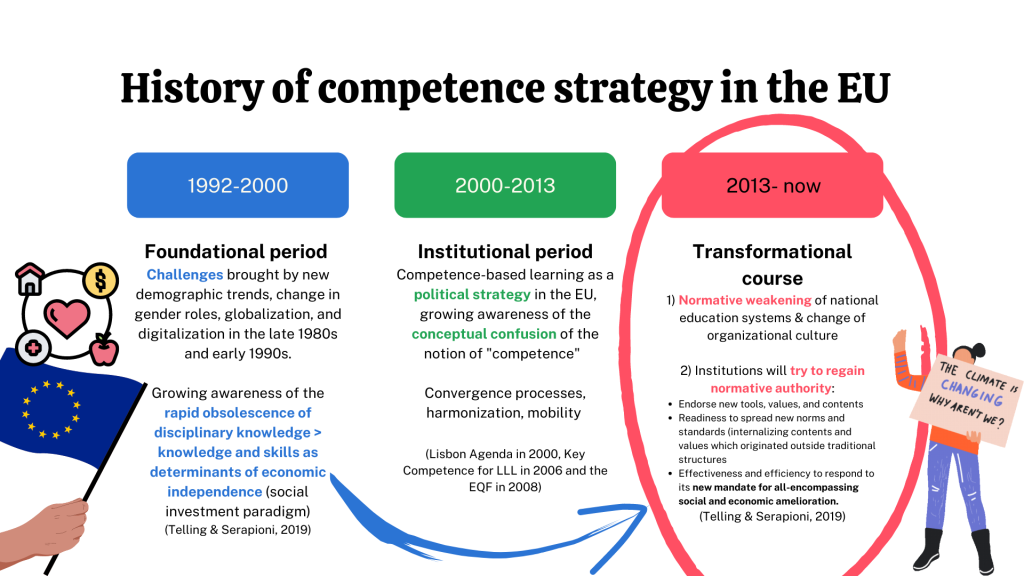
The competence strategy has certain consequences for higher education institutions:
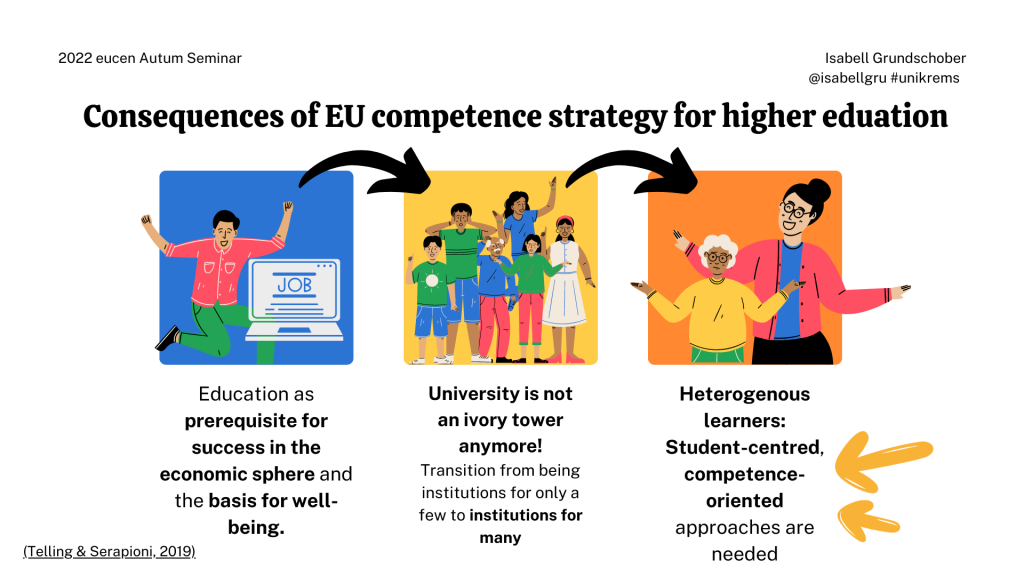
This change is pretty intense for higher education institutions. Some of them have a strong traditional (“ivory tower”-ish)approach why to provide education. The traditional idea is that universities hold all the knowledge and basically are the gate-keepers to knowledge. They have a strong normative authority as they hold the knowledge. But nowadays, knowledge cannot be only found at the university and learning takes place everywhere. Learning even faster takes place in many other places than university. This leads to a normative weakening. And ultimately leads to a “meaning void”.
Accepting the “why”: From meaning void to new sense
There are various theories of organizational change. Many are based on Lewins “Unfreezing – change – refreezing”-idea of change from the 1940ies. Mantere et al. (2012) adapted the model and present the following phases for sensegiving in strategic change:
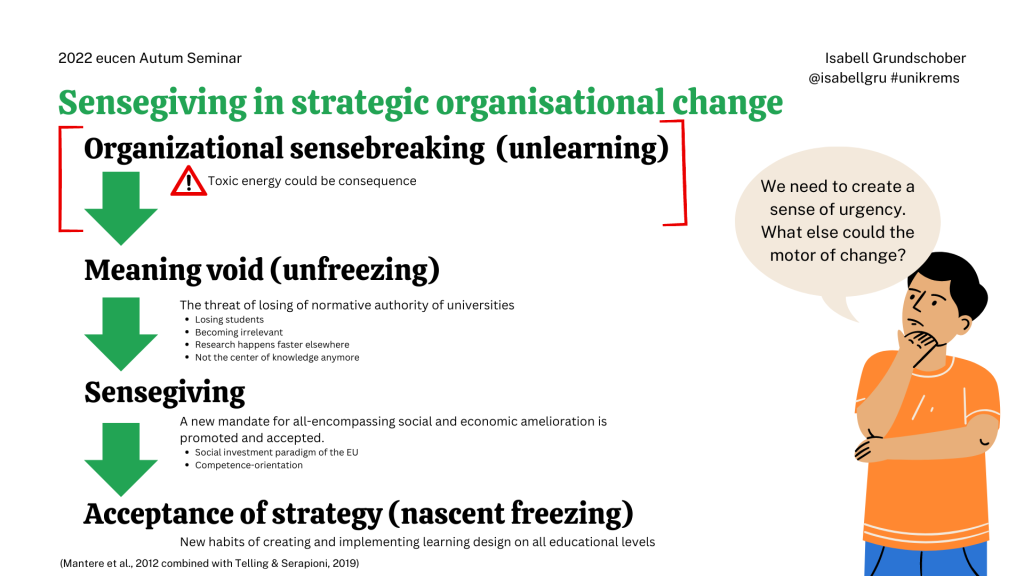
The authors claim that are certain threats when inducing sensebreaking. It releases toxic energy and could do a lot of harm to the organization and its stakeholders. What seems clear to me is: Eventually we will face a meaning void in higher education. Some feel it earlier, others later. We need a sense of urgency to really undergo change.
Do you know examples of pitfalls when implementing student-centered learning and teaching?
What did you experience? When did the what, how, and why didn’t match or conflict with each other? I’d love to hear your stories! Please leave a comment below.
One aspect that I experienced lately: A new software to share videos was bought by an university, but it doesn’t allow students to upload videos 🙂 Only teachers are allowed to upload videos. In student-centered learning and teaching scenarios, students need more autonomy to create and share content with their peers and teachers. These digital tools make student-centered learning rather difficult.
Do you want to know more about the what and the how?
The full slide deck with all presentations is available here:

